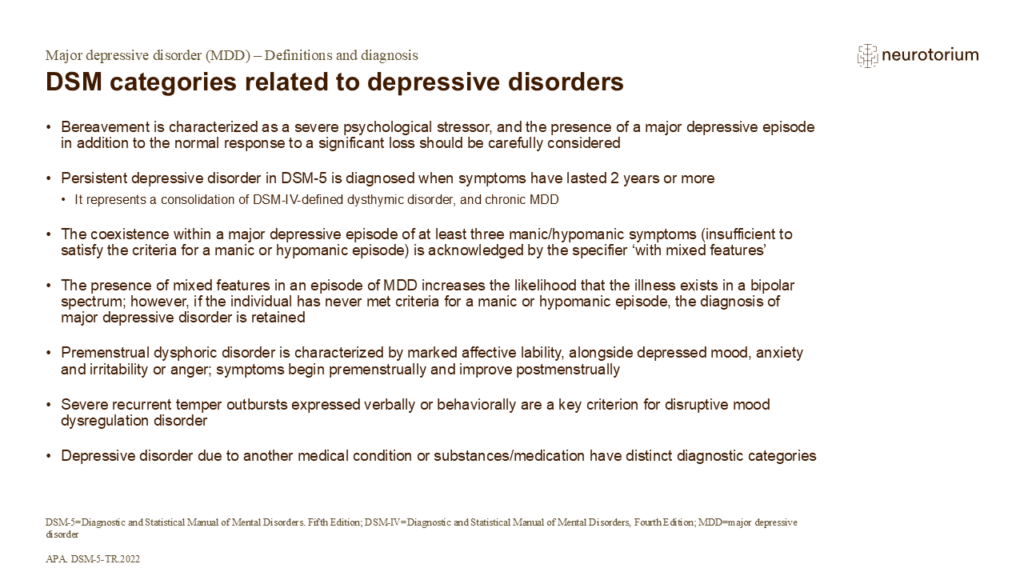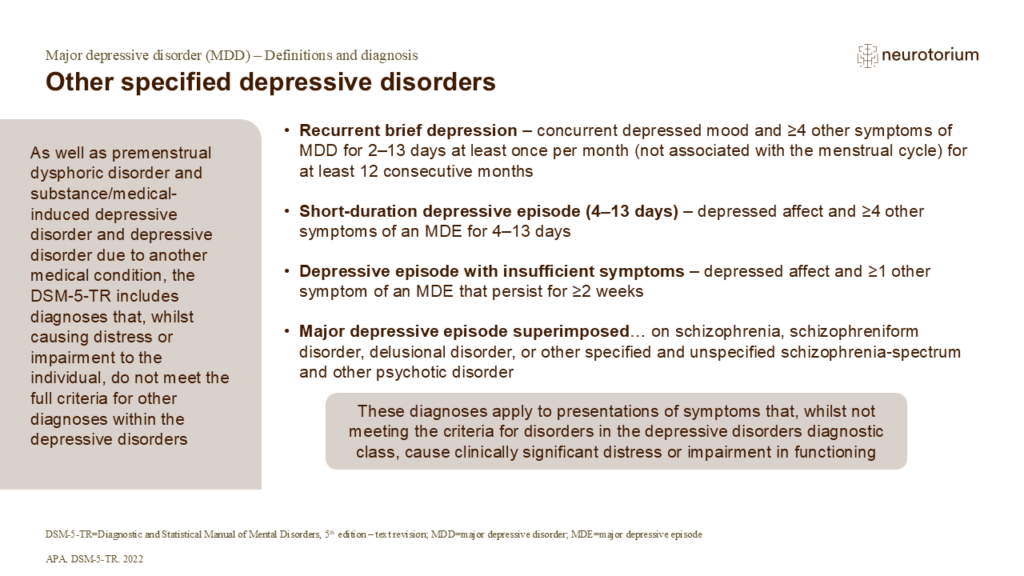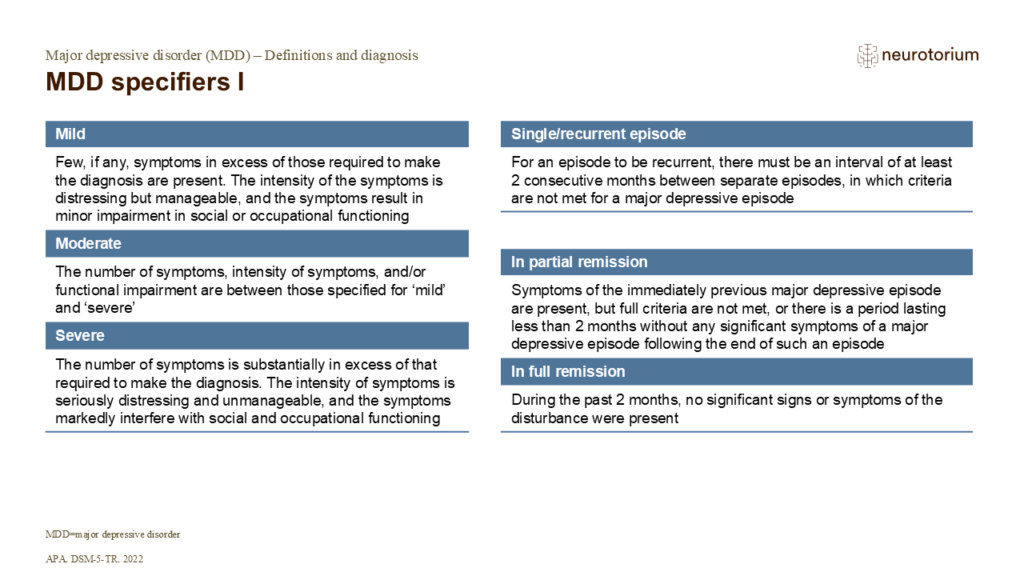Index for
slide deck
Major depressive disorder (MDD) - Definitions and Diagnosis

Major depressive disorder (MDD) - Definitions and Diagnosis
Definition of major depressive disorder

Definition of major depressive disorder

Depression

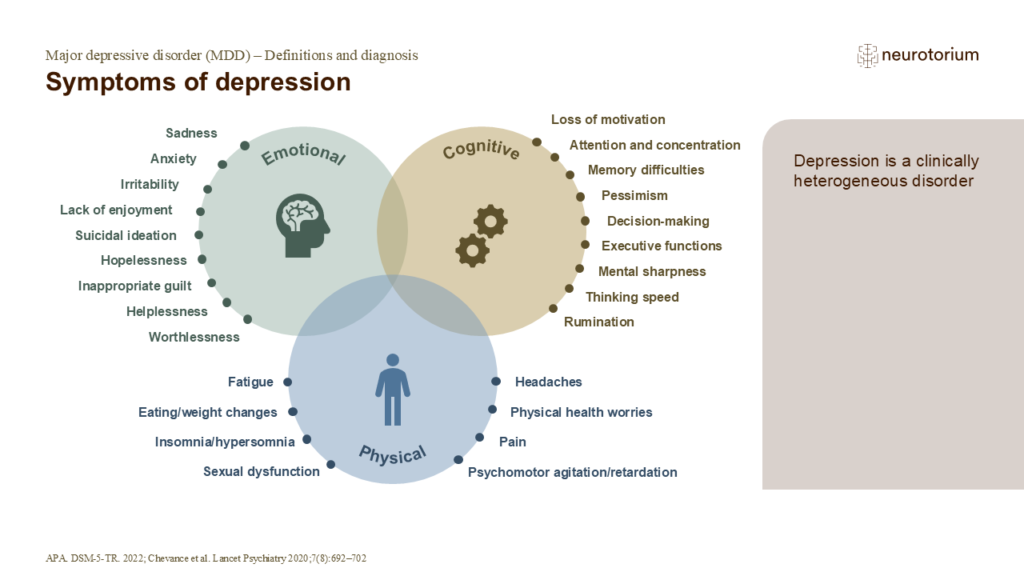
Symptoms of depression

The impact of the symptoms of depression on patients

MDD symptoms in DSM-5-TR
The American Psychiatric Association (APA) describes nine depressive symptoms for diagnostic purposes, as outlined on the slide.1 At least five of these symptoms, at least one of which is ‘depressed mood’ or ‘loss of interest or pleasure’ are required during the same two-…

DSM-5-TR criteria for MDD
The Diagnostic and Statistical Manual (DSM) of Mental Disorders is published by the American Psychiatric Association and provides standard criteria for the classification of mental disorders. It is now in its fifth edition text revision, DSM-5-TR, which was published in 2…

The Montgomery–Åsberg Depression Rating Scale
The Montgomery–Åsberg Depression Rating Scale (MADRS), which was designed to be sensitive to the effects of antidepressants, includes ten depressive symptoms.1 Some studies evaluating antidepressant effect have used the six-item MADRS subscale, which includes only the fol…

Definitions of clinical course and treatment outcomes I

MDD is a complex, often recurrent and remitting disorder1
Long-term treatment of depression with antidepressants benefits many patients by (1) reducing the likelihood of relapse or recurrence and (2) increasing the amount of time spent asymptomatic between episodes.3-5
Discontinuing antidepressant treatment in the acute phase be…

Residual depressive symptoms and the risk of relapse
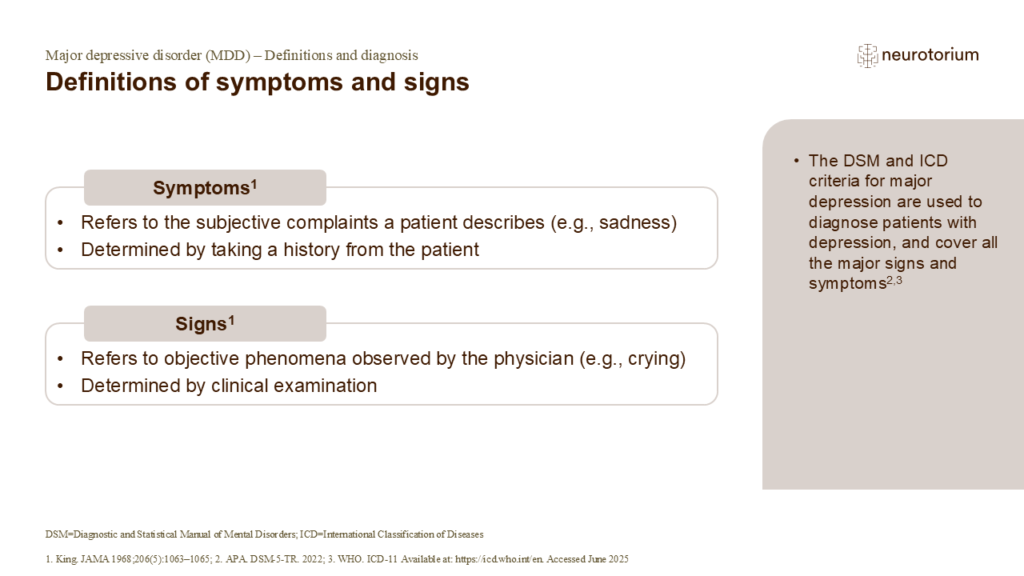
Definitions of symptoms and signs
As outlined on the slide, symptoms are apparent to the patient, whereas signs are not always.1 Diagnostic criteria for major depressive disorder cover many of the signs and symptoms of which a clinician should be aware.2,3
References:
1. King LS. Signs and symptoms. JAMA …

Definitions of epidemiological terms
The slide explains the difference between prevalence and incidence as key epidemiological terms. While prevalence is the proportion of persons with condition, in a given population, at a designated time, the incidence describes the number of people newly developing a cond…

Definitions of burden of disease and key epidemiological terms
This slide gives definitions for key epidemiological terms used in studies to quantify the burden of a disease. Term defined are the Burden of disease (BoD), Quality adjusted life years (QALYs), Years of life lost (YLLs), Years lived with disability (YLDs), Disability adj…









